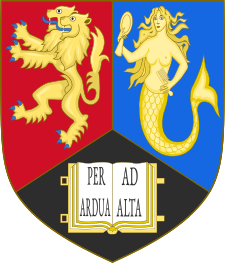Prehistoric fish fills 100 million year gap in evolution of the skull
2023-09-20
X-rays of an ancient jawless fish shows earliest-known example of internal cartilage skull, unlike that of any other known vertebrate.
A 455-million-year-old fossil fish provides a new perspective on how vertebrates evolved to protect their brains, a study has found.
In a paper published in Nature today (Wednesday 20th September), researchers from the University of Birmingham, Naturalis Biodiversity Centre in Leiden, Netherlands; and the Natural History Museum have pieced together the skull of Eriptychius americanus.
The research, funded by the Leverhulme Trust, suggests that the ancient jawless fish found in ancient deposits in Colorado, USA has a skull unlike that of any previously seen, and fills a gap currently spanning 100 million years in the evolutionary history of the vertebrate skull.
Using computed tomography, a form of x-ray technique, scientists recreated a detailed 3D representation of the skull of Eriptychius and is the first time that such a comprehensive recreation has been done on the specimen which was collected in the 1940s, originally described in the 1960s and is housed in the Field Museum of Natural History, Chicago.
This ancient fish had separated, independent cartilages encasing the brain, rather than the solid bone or cartilage structure of jawless and jawed fish that followed it.
While later specieshave a fully bound cage of cartilage that holds the brain, these results suggest that the early evolution of structures to separate the brain from other parts of the head may have begun with Eriptychius.
Dr Ivan Sansom, Senior Lecturer in Palaeobiology at the University of Birmingham and senior author of the paper said:
"These are tremendously exciting results that may reveal the early evolutionary history of how primitive vertebrates protected their brains. Eriptychius americanus appears to be the first evidence for a series of cartilages separating the brain from the rest of the head. This study emphasises the importance of museum collections and the application of new techniques in studying them."
Dr Richard Dearden, Postdoctoral Research Fellow in Palaeobiology at Naturalis Biodiversity Center and lead author of the paper said:
"On the face of it Eriptychius is not the most beautiful of fossils. However, by using modern imaging techniques we were able to show that it preserves something unique: the oldest three-dimensionally preserved vertebrate head in the fossil record. This fills a major gap in our understanding of the evolution of the skull of all vertebrates, ultimately including humans."
更多内容,请访问原始网站
文中所述内容并不反映新药情报库及其所属公司任何意见及观点,如有版权侵扰或错误之处,请及时联系我们,我们会在24小时内配合处理。
适应症
-靶点
-药物
-来和芽仔聊天吧
立即开始免费试用!
智慧芽新药情报库是智慧芽专为生命科学人士构建的基于AI的创新药情报平台,助您全方位提升您的研发与决策效率。
立即开始数据试用!
智慧芽新药库数据也通过智慧芽数据服务平台,以API或者数据包形式对外开放,助您更加充分利用智慧芽新药情报信息。





